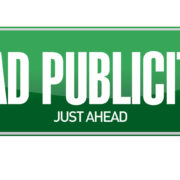
It’s finally over.
Not the blog series, mind you—just the part where you have to crunch those pesky numbers to find a budget that works for you. Now that you’ve got a number in mind, it’s time to get to the strategic part of IT marketing.
There’s a lot to consider here. But if you tackle everything in the right order, you’ll come out on the other side ready to create a functional, targeted plan for your business.
Let’s get started.
Audit your own IT marketing efforts
Actually, hold off on starting for a moment.
Before you can focus on your new IT marketing strategy, determine what you already have out there. That includes any type of existing marketing collateral, tactics, and skilled marketing personnel. Really, it’s all fair game.
Why put in the effort, you ask?
If you’ve got an existing brand (complete with a logo, color palette, branding guidelines, etc.), then you can save yourself a lot of time. That doesn’t mean that you’re stuck with these things, mind you—it just means you have an established track to follow if you so choose.
Or, to put it in plain proverbial English . . . if it ain’t broke, don’t fix it.
You can always build on it, tweak it, and make it great.
P.S. It’s totally okay if you’re starting from scratch. The tradeoff is that you have more creative liberties, albeit for a bit more work.

Set your expectations
You should have a fair idea of what you’ve got. Now, let’s focus on what you need.
For the sake of simplicity, let’s split it into two distinct categories: inbound and outbound IT marketing expectations.
Your inbound IT marketing expectations . . .
First up, a definition:
Inbound marketing is catered to creating quality content that pulls people toward your brand. Killer logos, amazing websites, thought-provoking content—that’s all inbound-focused.
This type of marketing is an especially critical tool for service businesses in industries like IT where expertise is specialized and competition is diverse.
In fact, the future of IT marketing lies with inbound marketing. Younger audiences don’t want to be pitched anyone’s solutions and services. They want value and relationships that last. Inbound IT marketing relies on building authority and earning trust with a base.
So what’s the catch?
It takes time to build trust. You can’t become the world’s most trusted MSP overnight. Take this into account when you craft your IT marketing strategy expectations. When you set your inbound marketing expectations, consider the following things:
When you set your inbound marketing expectations, consider the following things:
- Do I have the right people on my team to deliver what I need?
- If not, how much will it cost me to hire the right people?
- Do I have the time to build up my brand? Or do I need to close deals fast?
- Do I even know how I want to look or sound to my audience?
- What kind of approach will inform and build trust with my audience?
- Do I have the right team of salespeople to follow up after these leads?
Let’s talk sales
Of course, it’s not all about having master marketers in your pool of resources. You’ll need talented salespeople that can qualify, follow up and close on these continually nurturing leads.
That means plenty of outreach, open conversations, and even some free advice. Before you go all-in on an inbound marketing strategy, consider the status and strengths of your current sales team.
If you’re considering an inbound marketing approach, it’s best to do your homework and consult with marketing experts to fine-tune your marketing strategy.
. . . and your outbound IT marketing expectations
Just to keep things clear, here’s another definition:
Outbound marketing is the more traditional marketing form you’re probably familiar with. It’s the marketing equivalent of yelling “HEY! NOTICE ME!” over a channel of millions of other people.
Outbound IT marketing isn’t worried about cultivating relationships or nurturing leads. It’s about getting down and dirty about seeking out clients and taking your message to them. It’s old-school, and it’s reliant on your own drive and tenacity to keep it going. When used effectively, it’s a potent driver of branding, leads and sales.
Alright, so what’s the catch here?
Remember what we said earlier: younger people typically don’t like it one bit. But outbound marketing strategies do work in the right circumstances. And, the results are usually instant.
Have an IT need? Click here, buy now. Fin.
Even with a clever, appealing approach, it’s becoming an uphill battle to get noticed. What does it take to get noticed?
Money. A healthy amount of it too.
Why so much?
You need to spend money on events and advertisements over multiple platforms and channels, including social media sites, search engines, and more.
 When you set your outbound marketing expectations, consider the following things:
When you set your outbound marketing expectations, consider the following things:
- Do I have enough money to compete within my market?
- Is my team proficient in ad messaging, creation, placement and management?
- Do I know exactly what I want to achieve with my events, ads and campaigns?
- Do I have the knowledge of markets where competition is low(er)?
- Do I have more money to spend on it?
- Seriously, this is burning a hole in my pocket. Do I have enough money?

Wise Words
Even a Ferrari will get passed by a Corolla if it’s out of gas.
Let’s talk sales, again
From a sales perspective, the outbound IT marketing strategy is a breeze. If it’s successful, it’s literally as easy as waiting for a lead to call you and tell you what they want.
In short, it’s more akin to a transaction than anything else.
It doesn’t require a particularly skilled salesperson, and it doesn’t take many follow-up touches (if any).
But we’re not going to sugarcoat it. Advertising, which is a core component of outbound marketing strategies, is a pay-to-win system. It doesn’t matter if you have the most skilled ad team and salespeople.
Without money and knowing where to spend it, you’re going nowhere.
We’ve created a helpful guide to show you exactly where you should focus, based on your available resources.
Let’s get creative
Alright, now we’re getting somewhere!
By now, you should have a decent idea of how to develop and balance your inbound and outbound IT marketing strategies.
Now for the fun part: What’s your theme? What’s YOUR story? In other words, why choose you?
At TRIdigital, we like to walk our clients through a creative story arc exercise. In essence, you fill out your journey as a company.

Some of the questions include:
- Why?
- Why do you do what you do?
- What drives you to keep doing it?
- Goals
- Where do you see yourself taking your business?
- What’s the end game?
- Challenges
- What’s stopping you from achieving your business goals?
- What challenges do you see ahead of you?
- Resolution
- What can you do today to prevent tomorrow’s problems?
- What do you need to resolve these issues?
- Reflection
- What legacy do you want to leave behind?
- What was the point of it all?
Sadly, answering these questions won’t give you all the marketing answers you need. However, they’ll set you on a path to understanding what your company and your people are about.
It’s the soul of who you are, collectively.
From these questions, you can build a theme to drive your planning. It doesn’t have to be expressed directly anywhere. Not in your copy. Not in your design. Heck, it doesn’t even have to exist as a forgotten snippet of code in an email.
Your theme is a short, meaningful phrase that sums up who you are and what drives you. Others can help you find it, but nobody can take it from you.
You can’t outsource it. You can’t make it up. It’s what makes you, you.

Go forth and be strategic
When you leverage your theme as a core component of your IT marketing strategy, you can develop unique content that speaks for you.
Keep your budget in mind, understand your capabilities, know what you need . . . and get out there. These are the keys to building an IT marketing strategy that will leave your competition in the dust.



















